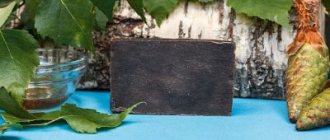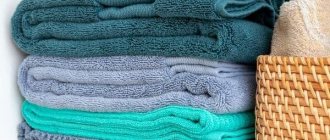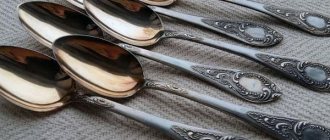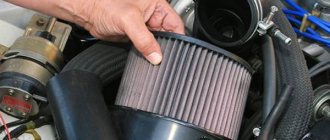Intex earplugs are ear plugs made of polyurethane foam that protect your ears from water and reduce sound volume by 30-40 dB. Soft earbuds do not scratch the ears, are well suited for people with narrow ear canals and do not cause allergies - so it is not surprising that people want to use them for as long as possible.
Since Intex earplugs are reusable, people who use earplugs often have questions: “How to clean earplugs?”, “How to clean earplugs?” and “How to wash earplugs?” We will try to answer these questions today.
How to wash Intex earplugs?
To wash polyurethane earplugs, you do not need aggressive detergents: bleaches and chemically active powders. It is best to wash earplugs by hand, under a warm tap, using baby or liquid potassium hand soap. If the earplugs are washed clean, they will fully restore their original color.
Once you've cleaned the earbuds, place them on a towel and gently pat them dry. Then the earplugs should be given time to dry completely. As a rule, this takes 3-4 hours. After the earplugs dry, they regain their ability to change and restore their shape. Once dry, washed and dried earplugs can be used again .
What to do if the earplugs are very dirty?
Sometimes, for example, after a long trip, the earplugs become very dirty, and it seems that simple water will not be enough. In such a situation, “Chlorhexidine” or a three percent solution of hydrogen peroxide will help - they will dissolve dirt and disinfect the accessory. How to proceed:
- Pour the selected product into a small container so that you can completely immerse the earplugs in it.
- Place the earbuds there for two to three minutes.
- Rinse thoroughly in running water.
- Dry as usual.
Miss Clean Tip: If you feel like your earplugs are still not clean enough after a swim, wash them with additional detergent as you would during regular cleaning. Do not forget to rinse thoroughly so that the polyurethane foam does not lose its properties.
In what situations are earplugs used?
When I talk to someone about earplugs for sleeping, the most common response I hear is, “I don’t like earplugs.” It is precisely this negative idea about this sometimes simply necessary adaptation that exists in our society.
I would compare earplugs to shoes: we don’t think whether we like shoes or not, we just know that we need them. But if a particular shoe is of poor quality and uncomfortable, then you may not like it and you can always find something more suitable for your feet.
It turned out that the same is true with earplugs. They are quite different in shape, size, and quality of material. And in order to comfortably use earplugs and get a good night’s sleep even when it’s noisy around, you need to choose good and suitable earplugs.
Earplugs are a must when traveling, both on the road and in hotels. Often you can only get a good night's sleep in a hotel with earplugs, since the sounds from the next room, from outside the window or in the hallway can be too loud until late at night or early in the morning.
When traveling on trains and airplanes, earplugs also become a great help; on a train, people around you may snore, and on airplanes, especially for children, earplugs help them sleep well.
Earplugs can also come in handy at home, for example, when neighbors are doing renovations or someone is being noisy and you want to sleep. They can also come in handy when reading and studying in noisy rooms.
Where to buy earplugs
I bought my first earplugs in a specialized store of protective equipment, they were earplugs from the 3M company (in the photo below they are number 2), the cost was 16 rubles per pair, the quality of these earplugs is low. They may be suitable for soundproofing when performing noisy work, but they are not comfortable enough for sleeping.
We sell earplugs for sleeping in pharmacies, but the best foam earplugs that I managed to try were bought online on Aliexpress.
In pharmacies the cost of 1 pair of earplugs for sleeping is 70-90 rubles. When ordering from a Chinese online store, the cost of 1 pair of earplugs with delivery will be approximately 50 to 80 rubles. It is much more profitable to buy 5 or 10 pairs at once; the price increases only a couple of times, and not 5 or 10.
The best earplugs for sleeping
When I set out to choose the best earplugs for myself, I ordered 3 different types of earplugs on Aliexpress (numbered 1, 3 and 4 in the photo below) and bought another one made in the USA at a pharmacy (they are in the video above).
Having tried to sleep with each type of earplug, I came to the conclusion that the best earplugs for me are numbers 3 and 4. These earplugs have foam that is approximately the same in softness and elasticity, they are the least felt in the ear during sleep and protect against sounds quite normally . The fact that earplugs number 3 have a more curly shape does not really matter.
Earplugs number 1, like the drugstore earplugs (these are white and yellow in color, shown in the video above), were too hard, both of them made my ears hurt in the morning. I have a narrow ear canal, so the softness of the material is especially important.
Foam earplugs number 2 have low elasticity; they did not stay tightly in the ear and coped with their function only for the first half hour.
So if you decide to buy foam earplugs for sleeping on Aliexpress, I recommend choosing from these 2:
- Number 3 is flesh-orange in color with a widening and slightly flattened end;
- At number 4 - flesh-colored with multi-colored stains, sellers call them colorful.
On Aliexpress you can select earplugs by image, they look exactly the same as in my photo.
The cost of earplugs No. 3 is 45 rubles per pair, 90 rubles for 5 pairs. Earplugs No. 4 are a little more expensive, 1 pair - 80 rubles, 5 pairs - 180 rubles. Prices from different sellers may vary slightly, and I would recommend choosing not the cheapest and free delivery, since it is long and sometimes the order may not arrive at all, but the standard one from Aliexpress.
Treatment
Most perforations heal without treatment within a few weeks. Your doctor may prescribe antibacterial drops if there are signs of infection. If the tear or hole in the membrane does not heal on its own, treatment will include procedures to close the perforation. These may include:
- Closure of the eardrum. If the tear or hole does not close on its own, the ENT doctor can close it with a special flap. This is an outpatient procedure in which the doctor freshens the edges of the wound to encourage growth and then places a flap over the hole. It may be necessary to repeat the procedure several times before the hole closes.
- Surgery. If the flap does not heal, or the doctor determines that the gap is unlikely to be closed with it, surgery is recommended. The most common surgical procedure is called tympanoplasty. The surgeon takes a tiny piece of your own tissue to close the hole in your eardrum. This procedure is performed on an outpatient basis, meaning you can go home the same day unless the anesthesia required requires a longer hospital stay.
High-quality noise reduction
Otolaryngologists insist that for people working in difficult acoustic environments, using such useful loud sound blockers is not only possible, but vital. Otherwise, you can develop professional ear disease in a short period of time.
But not all people know which professions are included in the list of especially risky ones. Workers who deal with electric saws, lawn mowers, and in the vicinity of constantly flying airplanes should learn the algorithm for how to insert earplugs. It is no less dangerous to constantly be in the epicenter of any event with loud voice accompaniment without appropriate protection.
Experts believe that earbuds are needed by all those who work in high-volume environments, where the decibel level is measured to exceed the maximum permissible 85 units. It is with this indicator that regularly affects the hair cells that a person quickly begins to complain of a sharp suffocation in the quality of hearing.
They are especially helpful for shooters, the military, and people working with explosive elements. This precaution is explained by the fact that the average volume of a shot is about 140 decibels, which is much higher than the maximum permissible limit.
Unlike standard options, which can be freely found in almost any pharmacy chain in the city, extensive pads covering the entire ear are used for shooting. The principle of their effect is identical to the classical variation, but they are much more convenient to take off and put on.
Not only athletes, but also professional hunters, as well as those people whose activities involve working at a shooting range, should know how to use such tools.
Custom solutions may be required for musicians who have to deal with acoustic signals transmitted through an amplifier and powerful sound signals. Against this background, the destructive effect on the inner ear increases several times.
In the professional musical community, there is an opinion that this kind of plugs only worsens the overall perception on stage. But this only happens if such specific “ear plugs” were made by hand, or were completely not intended for the tasks assigned to them. Real professionals use strictly custom-made products to purify the melody, voice and clarify tonal qualities.
This means that the base will be turned exclusively according to the cast. The master will also take into account the resonant frequency of the client’s hearing, which will ensure sound attenuation across the entire frequency spectrum. The result will please you by maintaining the original quality of the music data.
It will not be possible to say exactly how much it costs to manufacture a copy for a private order, since the master will have to take into account many features of the future strong sound blocker.
The safest material
The choice of material requires an understanding of the features of all existing options, so now we will talk about the main materials from which these products are made:
- foam propylene is characterized by low cost, but also a short shelf life (only one-time or two-time use is possible) Good noise protection properties;
- waxy. Natural, very comfortable to wear, cover the ear opening well, average use time. They have a round shape and are lined with cotton fabric on the outside. Once in the ear, the heat closes it completely. Comfortable for people who cannot wear earplugs made of synthetic materials;
- polyurethane. They are distinguished by elasticity, softness, durability, and the ability to wash;
- silicone. They are soft and comfortable to wear, can be washed, you need to be careful with them, and can last a long time. Better quality than the previous type, but the price is higher.
The variety of species makes it difficult to choose, so it is better to know what criteria you should focus on in order to choose the best option:
- the ability to take the desired shape to ensure comfort of use, the elasticity indicator is responsible for this;
- they should be soft and smooth so as not to damage the skin; if the coating is damaged, it is better to replace them with new ones;
- the possibility of their disinfection and cleaning, in case of choosing liners for long-term use;
- easy to put on and comfortable to wear. They should fit easily into your ears, slightly extend beyond the edges, but not too much because when lying on your side, the strongly protruding ear plugs will get in the way. The tightness of the fixation should not fall during sleep;
- The benefit of them is to protect against noise, so they should do a good job of this, but they shouldn’t completely eliminate all sounds. Sound absorption at a level of 35 decibels is considered optimal.
Specialized care products
The use of special antimicrobial care products for earplugs and tips greatly facilitates the process of cleaning and disinfecting them.
- Cleansing wipes. Thanks to special alcohol-free impregnation, the wipes perfectly clean the earplugs of any dirt without harming their surface. A package usually contains 30 wipes. They are convenient to use both at home and while traveling. To do this, you need to carefully wipe the earplugs with a napkin after using them and put them in a storage container. For earplugs with filters, cleaning wipes provide ideal care.
- Cleansing spray. Liquid disinfectant and external cleaning agent. It can be odorless and with various flavors. After removal from the ear canal, spray the earplugs with spray and leave it to act for 1-1.5 minutes. Then carefully wipe the surface with a clean, moisture-absorbent cloth and place it in a container once completely dry. For earplugs with filters, you need to blow out the filters to remove the spray. The most convenient way to do this is with a special balloon for blowing out ear plugs.
Caring for your hearing aid earmolds
To extend the life of an individual earmold, as well as maintain its good sound transmission, it is necessary to clean it at least 1-2 times a week with special means. The sequence of actions for caring for the earmold is as follows:
- Disconnect the earpiece with the sound guide tube from the hearing aid horn. This must be done very carefully so as not to damage the device.
- Dissolve the cleaning tablet in a special container with water. Wait until it is completely dissolved.
- Place the earmold with the sound guide tube into the container with the prepared solution and leave for 20-30 minutes.
- Remove the insert with the tube from the solution and rinse it in warm running water.
- Gently dry the earmold and tube with a soft, clean cloth.
- Dry the sound channel of the earmold and the sound guide tube using a special spray can.
- Place the insert on a soft, dry cloth overnight and let it dry. You can use a special electric drying device.
- Before attaching the sound guide tube and earmold to the hearing aid, be sure to check that they are completely dry.
In both the care of custom earplugs and the care of custom earmolds, it is also recommended to use special antimicrobial products: cleaning wipes and spray. After applying these products to the surface of the earmold, you need to let them sit for about one minute, and then wipe them dry with a dry cloth.
Extending the service life of earplugs and individual earmolds is also facilitated by daily hygienic care of the ear cavity.
bioTap wipes help keep the external auditory canal clean. With their help, you can easily and effectively remove excess earwax, clean the skin in the ear cavity and the auricle.
Medical contraindications
Are earplugs harmful to sleep from a medical point of view? If you follow the rules of use and care for them, there will be no harm to your health. But it is still worth noting that contraindications for wearing earplugs are the presence of inflammatory processes and if a wax plug has formed in the ear canal. For any ENT diseases, inserts are not allowed to be worn.
It is also not recommended to spend the night in them often, as this increases the risk of an inflammatory process. If you feel that your hearing has deteriorated, you should not wear earplugs until you consult a doctor.
If you have chronic diseases associated with the auditory organ, wearing earplugs also requires permission from your attending physician.
Note! In addition, it is important to understand that constantly putting on plugs is dangerous. What is dangerous about earplugs is that when used frequently, they cause addiction; as a result, it becomes more difficult to fall asleep at night with a natural background noise.
Causes
Causes of rupture or perforation:
- Inflammation of the middle ear (otitis media). A middle ear infection often causes fluid to accumulate in the middle ear. The pressure of this fluid can cause perforation.
- Barotrauma. Barotrauma is stress on the eardrum when the air pressure in the middle ear and the air pressure outside are out of balance. If the pressure is severe, the tympanic membrane may rupture. Barotrauma is most often caused by changes in air pressure associated with air travel. Other events that can cause sudden changes in pressure—and possibly rupture of the membrane—include scuba diving and a direct blow to the ear, such as a car airbag.
- Loud noises or explosions (acoustic trauma). A loud sound, such as an explosion or gunshot, or a blast—essentially an overwhelming sound wave—can cause the membrane to rupture.
- Foreign objects. Small objects such as a cotton swab or hairpin can puncture or rupture the tympanic membrane.
- Severe head injury. Severe trauma, such as a skull fracture, can dislocate or damage the structures of the middle and inner ear, including the eardrum.
Permanent use: expert opinion
Experts say that plugs should only be used in rare cases, such as when sleeping is impossible due to loud noises from neighbors or other noise sources. Experts are inclined to believe that the frequent use of such sleep protection from extraneous noise is not acceptable or necessary.
Constantly putting on plugs is permitted only if the person works in a place where their use is prescribed by safety regulations. Then, of course, you can’t do without them.
Note! Physiologically, with proper care and use, they are not dangerous, but psychologically they can lead to big problems. So the habit of sleeping in absolute silence, when it is impossible to comply with such conditions for a number of reasons, will eventually result in problems with falling asleep. And sleep disturbance is fraught with serious diseases.
It is also mandatory to refuse them in the presence of certain types of chronic ENT diseases, inflammation and excessive accumulation of earwax.
Is it harmful to sleep with earplugs, the answer is no. But it is worth following the rules of care and their application. Then the sleep will be deep and comfortable. Having chosen the appropriate option, you should not use it constantly, so as not to acquire a bad habit that will be difficult to get rid of in the future.
How to keep your earplugs clean while traveling?
Of course, one of the best ways to prolong the life of your polyurethane foam earplugs is to keep them from getting too dirty. But how to maintain hygienic cleanliness when it is not possible to constantly wash the accessory? In this regard, your helpers will be special sprays and non-alcohol wet wipes, which are presented in a large assortment on store shelves.
We recommend: You definitely haven’t done this with a vacuum cleaner: ideas for using an old device and its parts
Cleaning the accessory is very simple and requires only careful movements. With good care, your earplugs will be able to please you with peace and quiet for longer, and by taking care of their cleanliness, you are also taking care of your health.
Sleep in comfort
Despite its widespread medical use, most ordinary people prefer to use this kind of assistant when they go to bed. Thanks to them, you can hide from your roommate's snoring, as well as suppress any other unpleasant sounds.
The first officially documented mentions of such a widespread remedy today were recorded relatively recently - about a hundred years ago. We have to thank Academician Petryanov-Sokolovsky for this, who presented the public with a prototype of modern earplugs. We are talking about a special high-tech material, which was originally a component of gas masks used in the military industry. Moreover, the scientist’s development was immediately completely classified.
Even earlier, before the official appearance of such a specific filter material, people had to use improvised materials for identical purposes.
Most often, those who wanted to get plugs resorted to:
- clumps of sheep wool;
- dried grass;
- cotton balls.
And wax analogues at one time almost broke popularity records. But all of the above with noise reduction were not particularly effective, which prompted scientists to look for new options to help those suffering from too loud sounds.
Now even copies with a cord are sold freely, so that later it would be much safer to pull them out. Also, for those who want to get such a productive noise-canceling element, today there is no pressing question of where to buy it. It is enough to contact the pharmacy or its official virtual representative office.
Developers have advanced in the functionality of their devices. Thus, samples for swimmers not only protect the inside of the hearing organs from water. They are designed to help smoothly equalize pressure as you dive deeper. This is especially important when diving.
When choosing earplugs, experts recommend paying attention not only to the manufacturer’s brand, but also taking into account how soft the noise absorption characteristics they offer. Some are designed to only partially absorb sound, while there are stronger examples that completely block acoustic feedback within the limits indicated on the packaging.
Silicone
Practical and comfortable disposable products made of soft hypoallergenic material. They protect the ears well from water, making them suitable for swimmers. They do not require sizing, as they are usually a solid plastic mass. When used, pieces are plucked off, given the required shape and placed in the ear canal. Silicone earplugs have an average level of noise reduction, suitable for protection against household sounds and for sleeping.
The disadvantage of the products can be considered the relatively high cost: the price of one package is about 400 rubles. In addition, they are less often found on sale than others.
Reusable earplugs are made from sheet silicone and have a fairly long service life. The products are dense and elastic, shaped like mushrooms with a stem and cap. They have several sizes for children and adults. Hard silicone earplugs are almost universal. They are recommended for suppressing a variety of noise: from home to street and construction. Perfect for travelers, athletes, industrial and metro workers. They have many modifications for the best fit in various circumstances, are easy to clean, and do not lose their qualities for a long time. During use, they do not create the effect of being in a closed barrel.
Disadvantage of products: low vapor permeability. When worn continuously for a long time, the ear canals may become swollen and itchy. Such accessories are not suitable for sleeping, as they are quite rigid and can cause discomfort and put pressure on the tissue.
You can buy a package of earplugs made from sheet silicone for 200 rubles. Depending on the number of products and their purpose, the price of the product can reach 450–500 rubles.
Reviews
Irina: I myself have had to use earplugs more than once, since we live in the city center, and the constant noise does not in any way combine with my sensitive sleep. My husband bought ordinary silicone earplugs (they cost about 200 rubles then), at first it was not very comfortable to sleep with them (after all, a foreign body in the ear), but then I quickly got used to it and now I can’t imagine my sleep without these wonderful plugs.
Anna: I bought earplugs for my son, who constantly woke up due to the noise of his neighbors. We started using it at the age of 4 and found no harm; on the contrary, the child began to get enough sleep and concentrate better.
Andrey: Earplugs saved me while working at the factory. Because of the deafening noise of the machines, you could literally go deaf, and after the shift your head felt like cast iron after such a roar. Of course, it was impossible to completely “muffle” it, but silicone plugs more or less coped with this task.
Daria: I used earplugs while swimming. It was very inconvenient when water got into your ears; sometimes they can come in handy in the shower. But one minus is that during classes with such things you can hardly hear the trainer, so I had to stop using them.
Marina: Just right for sleep! Perfectly suppresses noise and ensures sound sleep until the morning. Just don’t take foam rubber ones - they quickly fall apart and offer almost no protection from outside sounds.
Is it possible to swim with earplugs?
What types of earplugs are suitable for swimming? Those that have waterproof properties. These are earplugs made of two materials: silicone and thermoplastic elastomer. Polyurethane foam and wax earplugs are not suitable for swimming.
Interesting materials:
How is ora translated in physical education? How is Dor Blue cheese translated? How is Toyota Gaia translated? How to reboot this tablet? How to restart the printer after refilling the Brother cartridge? How to reboot Redmi? How to restart a Samsung eco bubble washing machine? How to reboot the IWL220 terminal? How to re-register with a doctor? How to restart the VKontakte application?
What it is?
Not all sounds can wake a person, but their presence has a negative impact on sleep, and sometimes dulls hearing. Maximum benefit for the sleeping body is possible only in conditions of absolute silence, which is difficult to achieve in the modern world.
Traffic, noisy neighbors, elevator operation, abruptly triggered car alarms and other external stimuli prevent the body from plunging into a state of complete relaxation. That's why such a device as earplugs was invented.
Reference! In 1907, in Germany, for the first time, the issue of protecting hearing from the “benefits of civilization” was addressed. Initially, earplugs were wax (1960), and silicone analogues saw the world in 1962 thanks to the spouses Ray and Cecilia Benner.
Earplugs are plugs that fill the ear to prevent noise and other irritants from disturbing the person. They have a streamlined shape and are made of elastic material (silicone, polyurethane, polypropylene, wax). They look like a compact tampon with a wide base and a narrow end.
This allows you to adapt them to any ear size without worrying about completely filling the space, taking into account the individual structure of the ear cavity. The name of the anti-noise earplugs comes from the abbreviation of two words “take care of your ears,” which literally conveys their direct purpose.
But these devices are used not only to sleep peacefully. Their use during diving is relevant in order to equalize intracranial pressure; when swimming in the pool, to prevent water from getting into your ears; during air travel, in order to eliminate pain that occurs due to pressure drop when descending/ascending altitude.
Earplugs are a popular assistant for musicians, which not only allows them to concentrate and not lose their rhythm, but also not to lose their hearing due to regular loud music.
Economical care option
If you don’t have special wipes or spray on hand, this cleaning method is also allowed, consisting of the following steps:
- After removing, wash the earplugs under running water using neutral soap.
- Let the earplugs dry or wipe them with a clean cloth.
- If your earplugs have filters, make sure there is no water left in them. You can remove water by blowing out the filters yourself or using a balloon to blow out the liners.
- Once completely dry, place the earplugs in a storage container.











